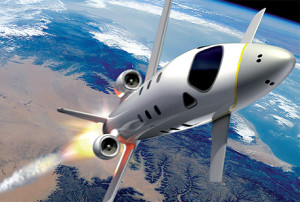How Do Spacecraft Navigate In Space
Getting off Earth is one thing, but how do spacecraft navigate the void and defend themselves against the perils of space?
The word ‘spacecraft’ usually evokes an image of a ‘warp-speed’-travelling vessel of the future, but in the broadest definition, they’re any vehicle designed for travel in space -either piloted or unmanned.
In the past few decades since we’ve learned how to escape Earth’s gravity, we’ve sent hundreds of spacecraft off to many of the major destinations in the Solar System, from our own Moon and the Sun, right out to dwarf planet Pluto and the very border of interstellar space.
While the Vostok manned space programme and Apollo missions to the Moon required life-support systems for the astronauts on board, sending unmanned craft into space is far from simple by comparison.
Depending on the mission type and the target destination, the challenges of deep space and hazards encountered can threaten the craft’s main systems or damage the sensitive science instruments it carries, potentially rendering the mission a failure.
 A probe, lander, orbiter or any of the broad categories a spacecraft can fall under will house bespoke technologies specific to its mission, but they all require a power supply and energy distribution to keep their systems and instruments running. Power is a premium commodity, especially for those missions that run over decades like the Voyager and New Horizons probes. Chemical fuel cells, solar power, batteries or a radioisotope thermoelectric generator (RTG) all might be used as an energy source. Via careful monitoring both from ground control on Earth and by the spacecraft’s main computer, power to any individual system can be shut down to keep the electrical outlay within the limits of the supply.
A probe, lander, orbiter or any of the broad categories a spacecraft can fall under will house bespoke technologies specific to its mission, but they all require a power supply and energy distribution to keep their systems and instruments running. Power is a premium commodity, especially for those missions that run over decades like the Voyager and New Horizons probes. Chemical fuel cells, solar power, batteries or a radioisotope thermoelectric generator (RTG) all might be used as an energy source. Via careful monitoring both from ground control on Earth and by the spacecraft’s main computer, power to any individual system can be shut down to keep the electrical outlay within the limits of the supply.
The on-board computer isn’t just there to keep tabs on power though. This will process all of the data from instruments, interpret signals from mission control and, vitally, maintain several levels of fault protection, helping to prevent all manner of problems, from minor malfunctions to those that can jeopardise the entire mission. As a fundamental component of any computer, the craft will also contain a clock by which all activity is regulated.
Around half a dozen subsystems control a spacecraft’s propulsion, attitude and articulation. A main engine produces the force necessary for a motor burn or orbit insertion, with rocket fuel or propellant. Thrusters are much smaller devices that can nudge a craft back on course or make other correctional manoeuvres. Controlling the orientation of the craft is important not just to maintain its trajectory, but also to provide the ideal position for communicating with Earth, pointing instruments in the right direction, and to use both sunlight and shadow for thermal control.
The extreme conditions of the Solar System mean any spacecraft needs to be equipped with environmental subsystems to deal with many dangers. Colliding with an asteroid is probably of least concern: even if a spacecraft is travelling through the Asteroid Belt, there are millions of kilometres between each one so the odds of a crash are negligible.
The threat of micrometeoroids – tiny particles weighing less than a gram – is very real though. They travel at thousands of kilometres an hour and a collision with one is like being hit by a high-velocity bullet. So sensitive areas of the craft are shielded with blankets of Kevlar armour and strong fabric. The lack of atmosphere in space makes the spacecraft’s systems prone to temperatures outside their range, so for thermal regulation special heaters are used as well as passive cooling with gold reflectors or white thermal blankets to deflect heat from the Sun.
Dealing with space radiation
As we send more probes farther into space and learn more about our Solar System, the prospect of sending manned missions beyond the Moon is becoming much more realistic. One of the biggest obstacles to this effort is how to protect astronauts from the high-energy particles found in deep space and the deadly solar winds, which contain alpha particles and protons that can destroy DNA, causing cancer.
Astronauts in terrestrial orbit, such as those working aboard the International Space Station, are protected by the Earth’s magnetosphere, but Apollo astronauts are thought to have got lucky in avoiding the deadly solar maximum on NASA’s missions to the Moon.
Recently, scientists have been working on a way of using magnets to create an artificial miniature magnetosphere 200 metres (660 feet) around a manned craft that would effectively separate the charge of the solar wind, deflecting harmful particles away. This still wouldn’t protect from intergalactic cosmic rays though, meaning a safe manned mission to, say, Mars is still a way off yet.
